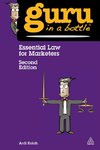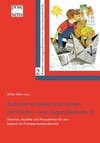
-
 Anglický jazyk
Anglický jazyk
Mechanical puzzles
Autor: Source: Wikipedia
Source: Wikipedia. Pages: 73. Chapters: Soma cube, Tower of Hanoi, Flexagon, Rubik's Cube, Jigsaw puzzle, Peg solitaire, Combination puzzle, Speedcubing, Mechanical puzzle, Rubik's Revenge, Fifteen puzzle, Professor's Cube, Klotski, Square One, V-Cube 6,... Viac o knihe
Na objednávku, dodanie 2-4 týždne
19.35 €
bežná cena: 21.50 €
O knihe
Source: Wikipedia. Pages: 73. Chapters: Soma cube, Tower of Hanoi, Flexagon, Rubik's Cube, Jigsaw puzzle, Peg solitaire, Combination puzzle, Speedcubing, Mechanical puzzle, Rubik's Revenge, Fifteen puzzle, Professor's Cube, Klotski, Square One, V-Cube 6, V-Cube 7, Pyramorphix, Megaminx, Rubik's Magic, Dogic, Helicopter Cube, Pyraminx, Rubik's Snake, Impossible bottle, Pocket Cube, Snake cube, Pyraminx Crystal, Happy Cube, Rush Hour, Impossiball, Skewb Ultimate, BrainTwist, Rubik's Clock, Sliding puzzle, Disentanglement puzzle, Secret decoder ring, Equilibrium, Rubik's Magic: Master Edition, Sudoku Cube, Rubik's 360, Puzzle jug, Alexander's Star, Minus Cube, Puzzle ring, Skewb Diamond, Baguenaudier, Nintendo tumbler puzzle, Burr puzzle, Egg of Columbus, Eastsheen, Hoppers, Snapper Puzzle, Puzzle globe, Think-a-Dot, Rubik's Triamid, Puzzle box, Missing Link, Pyramid puzzle, Diabolical cube, Lock puzzle, Yoshimoto Cube, Human knot, Fuddling cup, Puzzle jewelry, Gridlock. Excerpt: The Rubik's Cube is a 3-D mechanical puzzle invented in 1974 by Hungarian sculptor and professor of architecture Erno Rubik. Originally called the "Magic Cube", the puzzle was licensed by Rubik to be sold by Ideal Toy Corp. in 1980 and won the German Game of the Year special award for Best Puzzle that year. As of January 2009, 350 million cubes have sold worldwide making it the world's top-selling puzzle game. It is widely considered to be the world's best-selling toy. In a classic Rubik's Cube, each of the six faces is covered by nine stickers, among six solid colours (traditionally white, red, blue, orange, green, and yellow). A pivot mechanism enables each face to turn independently, thus mixing up the colours. For the puzzle to be solved, each face must be a solid colour. Similar puzzles have now been produced with various numbers of stickers, not all of them by Rubik. The original 3×3×3 version celebrated its thirtieth anniversary in 2010. In March 1970, Larry Nichols invented a 2×2×2 "Puzzle with Pieces Rotatable in Groups" and filed a Canadian patent application for it. Nichols's cube was held together with magnets. Nichols was granted on April 11, 1972, two years before Rubik invented his Cube. On April 9, 1970, Frank Fox applied to patent his "Spherical 3×3×3". He received his UK patent (1344259) on January 16, 1974. Packaging of Rubik's Cube, Toy of the year 1980-Ideal Toy Corp., Made in Hungary.In the mid-1970s, Erno Rubik worked at the Department of Interior Design at the Academy of Applied Arts and Crafts in Budapest. Although it is widely reported that the Cube was built as a teaching tool to help his students understand 3D objects, his actual purpose was solving the structural problem of moving the parts independently without the entire mechanism falling apart. He did not realize that he had created a puzzle until the first time he scrambled his new Cube and then tried to restore it. Rubik obtained Hungarian patent HU170062 for his "Magic Cube" in 197
- Vydavateľstvo: Books LLC, Reference Series
- Rok vydania: 2012
- Formát: Paperback
- Rozmer: 246 x 189 mm
- Jazyk: Anglický jazyk
- ISBN: 9781157255710




 Nemecký jazyk
Nemecký jazyk 








 Španielsky jazyk
Španielsky jazyk